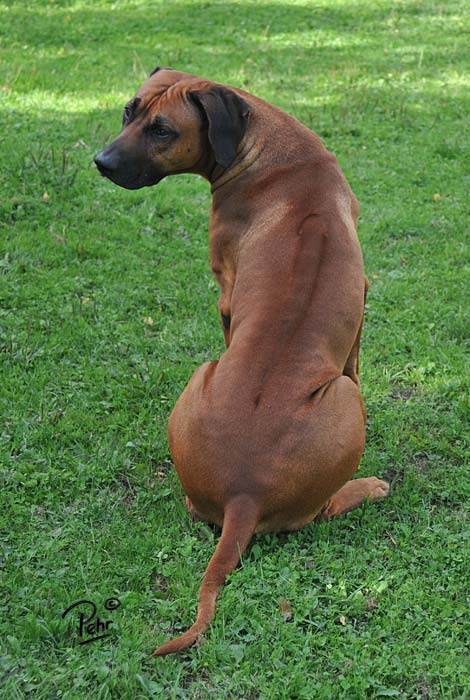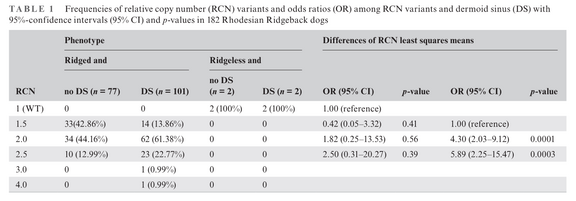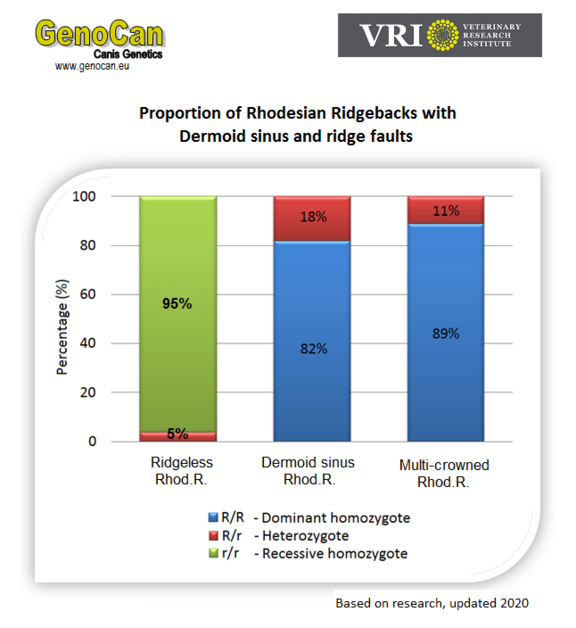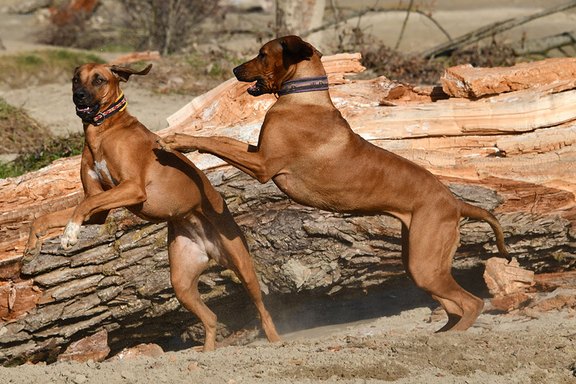The Rhodesian Ridgeback

Breed characteristics of the Rhodesian Ridgeback
The breed characteristic of the Rhodesian Ridgeback is the so-called "ridge" - a mutation that also gives the breed its name. Mutations are permanent changes to the genetic material. They change the genetic information stored in the DNA in one or more body cells. In a favorable case, they provide evolutionary advantages, but they can also lead to hereditary diseases if certain cell processes no longer run physiologically. The genetic defect Dermoid Sinus is to be seen in connection with the Ridge, even if many breeders of Rhodesian Ridgebacks do not like to hear this and do not want to admit it. Because of the Dermoid Sinus, the Rhodesian Ridgeback is also listed on the „Qualzuchtgutachten“ (Breeding assessment for harmful breeding practices).
The Ridge was a product of chance, a whim of nature and we should see it as such. However, this mutation is highly emphasized by the breeders - the future breeding dogs are already selected for this characteristic in the whelping box and it is specifically selected for. In the Rhodesian Ridgeback, only dogs with a perfect ridge and two symmetrical crowns are used for breeding. Even a slight misalignment of the crowns often leads to exclusion from breeding, although the standard only states "incorrect crowns of the ridge". This is a classic over-interpretation of the standard, which has been warned against for many years in numerous dog breeds and has already led to the ruin of many breeds. Disqualifying faults are of course aggressive, overly shy dogs and dogs clearly showing physical of behavioural abnormalities but the fact that "dogs without ridge" are now also listed in this category makes me stunned (see the FCI-standard).
In addition, dogs with white paws are excluded from breeding and white on chest is absolutely undesirable, even though it is permissible in the standard, when it is not to excessive. As a result, a huge amount of genetic diversity has been lost over the years. One may not even think about the fact that ridgeless puppies used to be killed simply because they did not have the breed characteristic ridge.
The ridge and the Dermoid Sinus risk
The ridge is caused on chromosome 18 by a duplication of four genes (FGF3, FGF4, FGF19 and ORAOV1) and a part of a fifth (CCND1) in the order listed. Dogs normally have two sets of these genes, one from each parent, which means that they are genotypically r/r and have no ridge on the back. If there is a duplication (an extra copy of these genes), then the dog will have a ridge.
It has been proven that dogs with ridge have a higher risk of DS. This does not mean that the duplicated gene locus on chromosome 18, which is responsible for the expression of the ridge, is also the only gene locus for the development of DS. It is clear that Dermoid Sinus is inherited in a complex, polygenic way. There is no doubt that DS is a polygenic inheritance. Nevertheless, additional, as yet unidentified risk factors are likely involved, and environmental influences also play a consistent role
The publication by Zhang and Distl (2022) clearly demonstrates that the risk of developing DS correlates with the number of copies of duplicated genes at this location. Dogs with 2 copies (2.0 RCN, genotype R/R) have a 4.3-fold higher risk of developing the disease than dogs with 1.5 copies (genotype R/r). There are apparently dogs with more than 2 copies. RCN 4 means that the dogs have 8 copies. It can also be seen that the DS risk in dogs with 2.5 copies is 5.89 times higher than in dogs with 1.5 copies (penultimate column in the table).


The inheritance of the ridge is probably monogenic autosomal dominant with incomplete penetrance. This means that although the large R is predominant, it does not have to be visually pronounced. This explains the occurrence of ridgeless dogs with the R/r genotype. However, this is extremely rare.
Since ridgeless Ridgebacks with the r/r genotype do not show any duplication, they have a suitable breeding potential to keep the number of copies low and should therefore definitely be used in breeding. As already mentioned, the Ridgeback clubs in Germany have vehemently refused to go down this path for many years.
As with many other pedigree dogs, the Rhodesian Ridgeback is subject to constant selection for specific, desirable visual characteristics that have been bred to perfection. This has inevitably led to a loss of genetic variance and, of course, to defective genes.
By breeding the Lionhound and including from the outset dogs that miss the Ridge mutation, we are trying to counteract this. Pushing a mutation into the background in a breed that is a purely cosmetic trait and has no benefit for the animal is more than reasonable and should be understandable for everyone. There are more than enough problems in pedigree dog breeding that need to be solved due to the over-interpretation of the standards.

